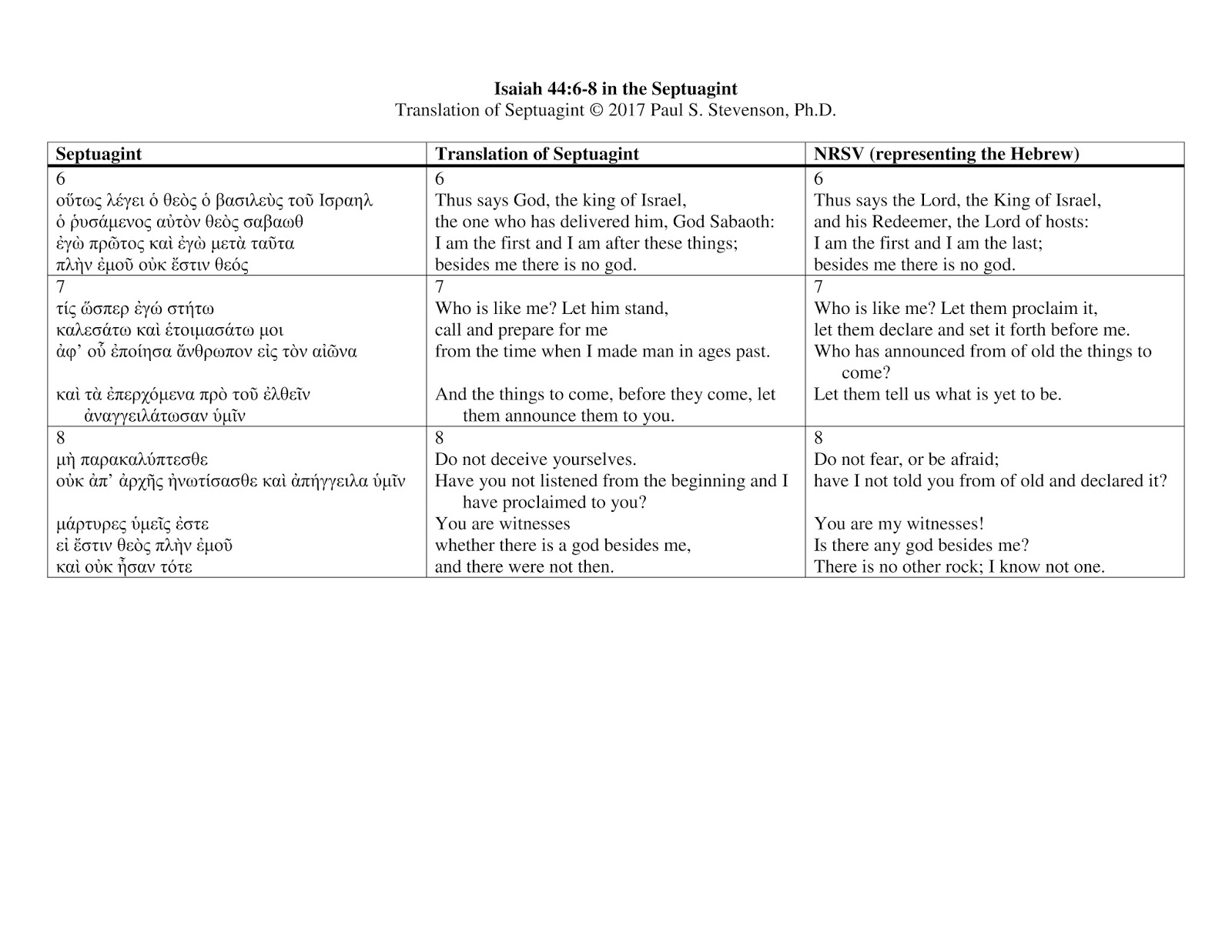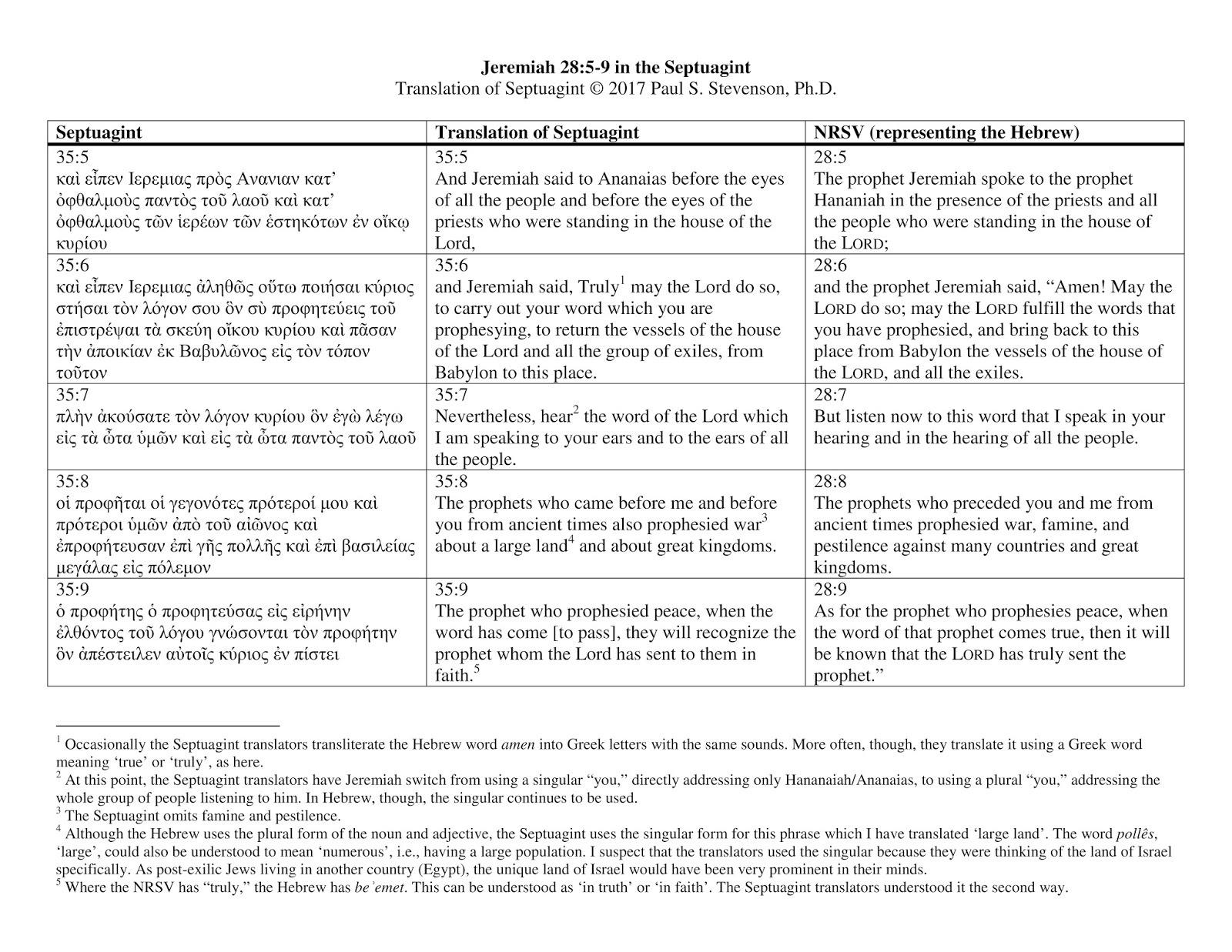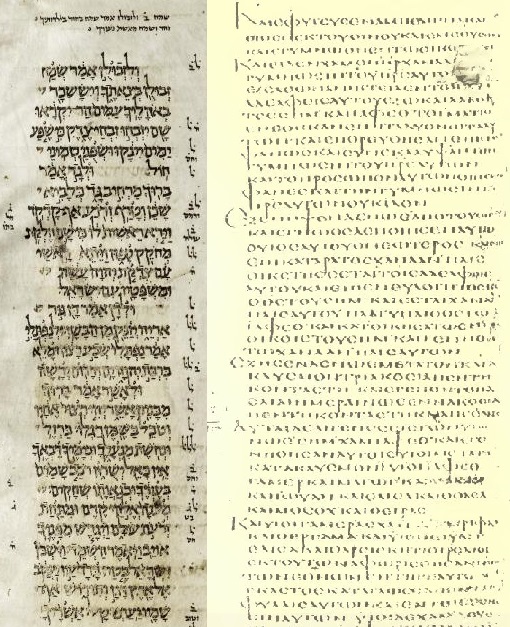Over the past few years I have compared many Old Testament passages in the Masoretic Hebrew text and the Septuagint as I have prepared to lead the weekly lectionary study at my local Episcopal church. Sometimes there are no striking differences, but often there are quite significant ones. Why do these differences exist? I alluded to the reasons briefly in an earlier post. I will now give more details. 1. The original Hebrew text had consonants but no vowels. In modern times we are accustomed to thinking of the vowels of the Masoretic Hebrew text as definitive. In many cases, though, different vowels are possible and make just as much sense. Sometimes the vowels that presumably underlie the Septuagint’s translation actually make the text easier to understand. 2. Manuscripts were handwritten. Letters could be confused with one another, depending on the scribe’s style of handwriting. ר (r) and ד (d), ו (w) and י (y), ב (b) and כ (k) are among the pairs of easily conf...



